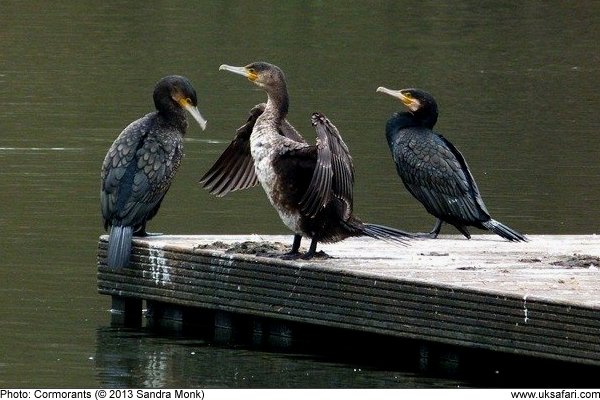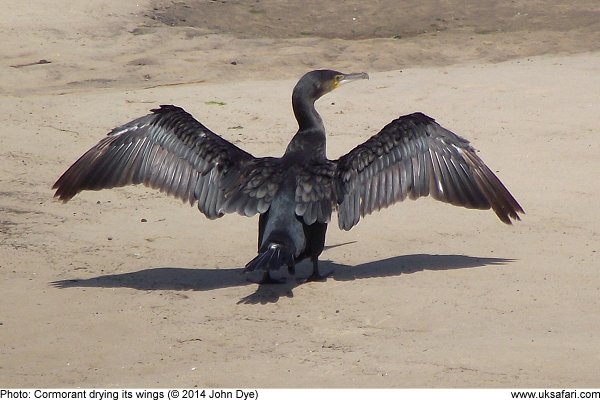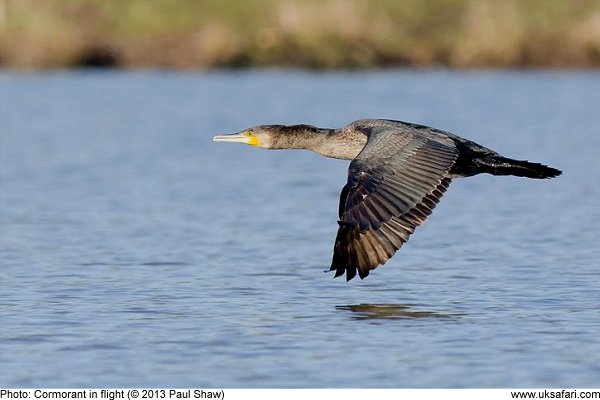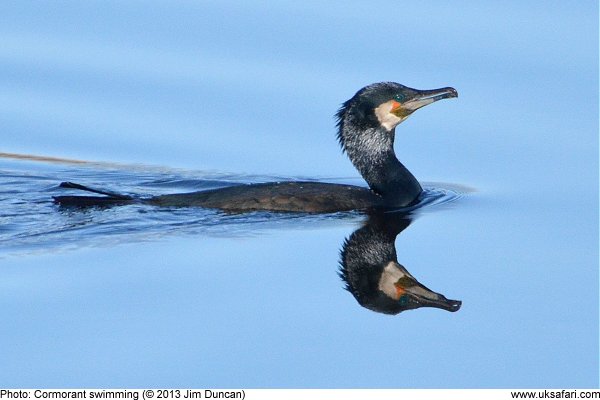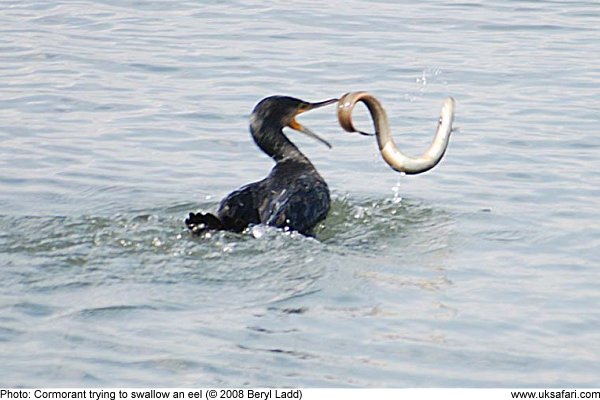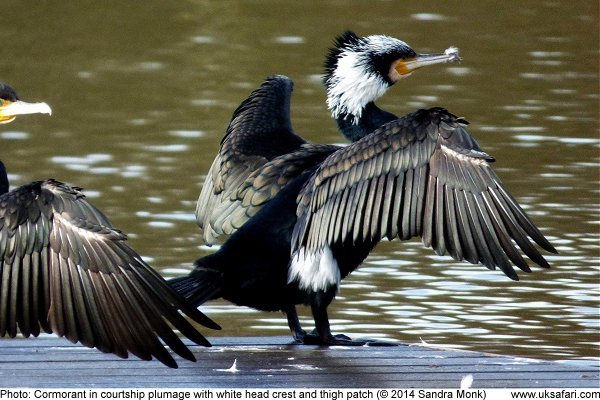 Quick Facts
Quick Facts
Scientific name: Phalacrocorax carbo
Size: Grow to around 92cm in length. Wingspan around 150cm
Distribution: Found throughout the UK
Months seen: All year round
Habitat: Coastal areas especially rocky coastline and estuaries. Also inland lakes, rivers and reservoirs
Food: Fish
Special features: Cormorants are large waterbirds. The plumage is a dark grey-black the wing feathers have a jet black fringe around the edge, giving them a scaly pattern. The neck is long and the beak is grey with a hooked tip. There is a small yellow patch of skin at the base of the lower mandible which is surrounded by white feathers covering the cheeks. Juvenile Cormorants have a white belly. The legs are black, and the feet are webbed across all the four toes giving them good propulsion underwater.
Although ungainly on land, Cormorants are superb swimmers. They pursue fish underwater, and when they catch one they bring it to the surface, where they float quite low in the water, and position their fish so they can swallow it head first.
Cormorants can often be seen standing with their wings held straight out to their sides. They do this to dry out their feathers and to regulate their body temperature. Bird feathers are naturally waterproof due to their structure. But the feathers of Cormorants are slightly less waterproof than other birds. This seems unusual for water birds, but it's believed this enables them to stay under the surface of the water more easily. Of course it also requires regular periods of drying time. For this reason they usually look for places to fish where there are nearby, raised perches to dry off.
 Related Pages
Related Pages

 Popular Pages
Popular Pages
Amphibians, Bats, Badgers, Beetles, Birds, Birds of Prey, Bumble Bees, Butterflies, Caterpillars, Creepy-Crawlies, Deadly Spiders, Dolphins, Dragonflies, E-Postcards, False Widow Spiders, Free Newsletter, Frogs, Fungi, Garden Spiders, Glow-Worms, Grey Squirrels, Hedgehogs, House Spiders, Ladybirds, Mammals, Marine Mammals, Moths, Owls, Reptiles, Spiders, Toads, Trees, Wildlife Hospitals
Copyright © 2020 G. Bradley UK Safari. All rights reserved | About Us | Links | Contributors


 Cormorants
Cormorants